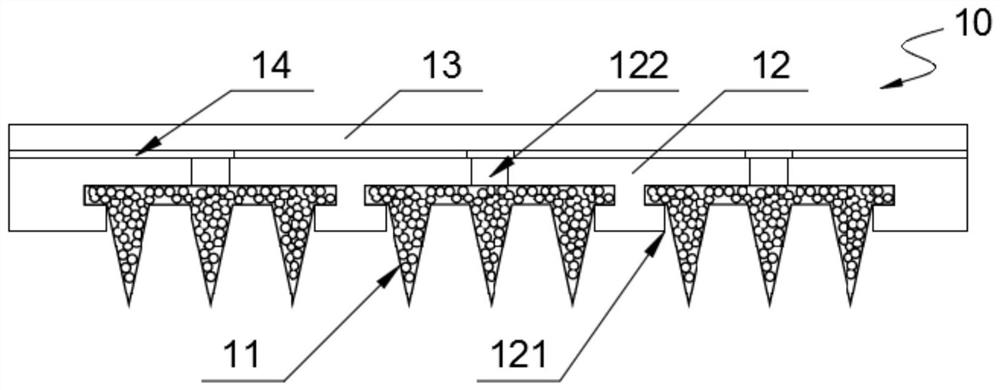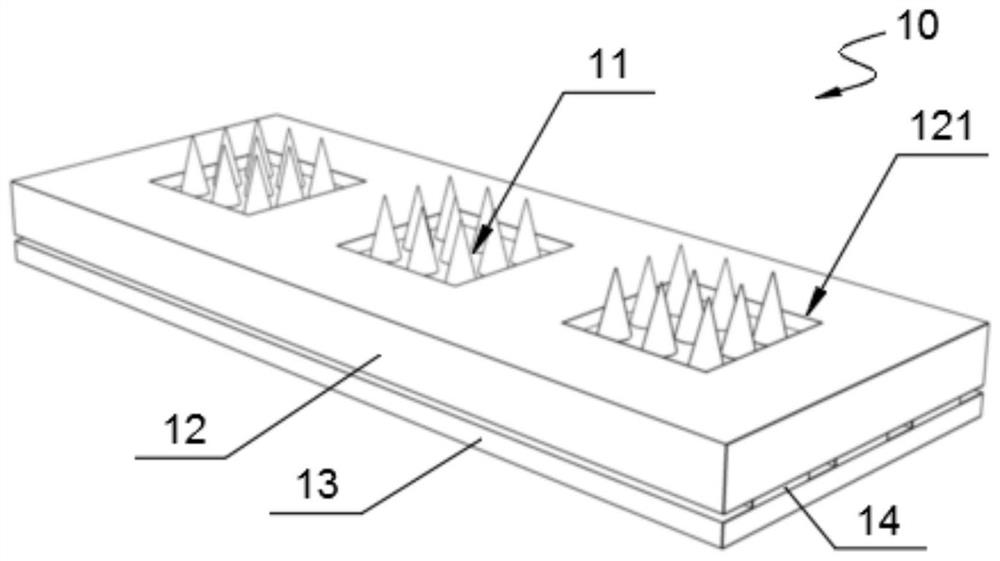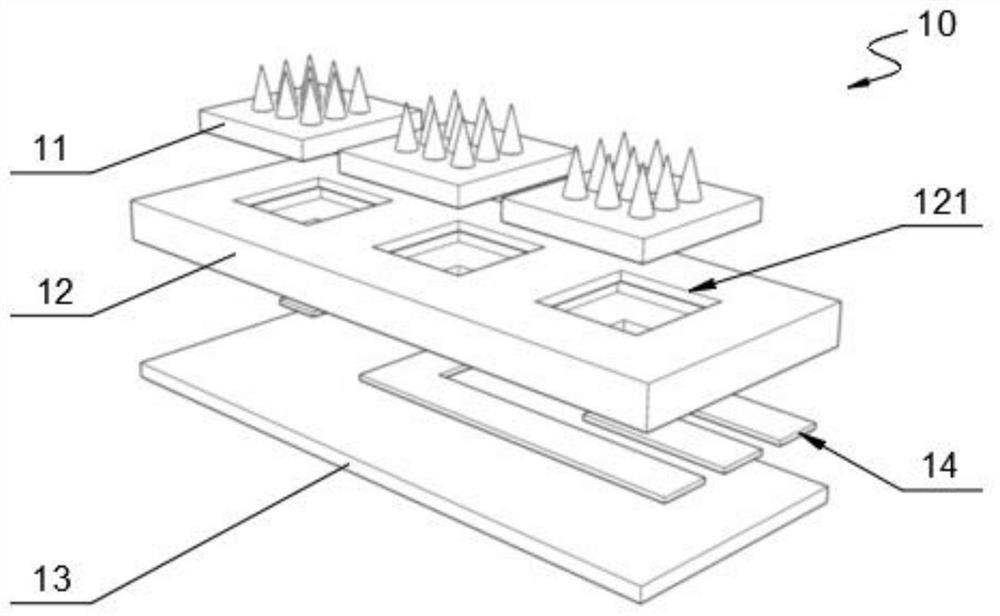Sensor for detecting plant active small molecules and preparation method
A small molecule and sensor technology, applied in the field of plant sensors, can solve the problems of difficult detection of internal biological signals in stems and leaves of plants, inappropriateness, high requirements for reliability, transparency, photosynthesis of stems and leaves, etc.
- Summary
- Abstract
- Description
- Claims
- Application Information
AI Technical Summary
Problems solved by technology
Method used
Image
Examples
Embodiment 1
[0061] see figure 1 As shown, the embodiment of the present invention provides a sensor 10 for detecting plant active small molecules, including:
[0062] Microneedle array electrode 11, which is used to detect the concentration of plant active small molecules;
[0063] A transparent flexible substrate 12, one side of which has a groove 121 for fixing the microneedle array electrode 11;
[0064] A transparent flexible film 13, which is fixed on the other side of the transparent flexible substrate 12 away from the groove 121;
[0065] A plurality of signal conduction circuits 14, which are arranged between the transparent flexible substrate 12 and the transparent flexible film 13, and each of the signal conduction circuits 14 passes through the transparent flexible substrate 12 and the microneedle array electrode 11 connect.
Embodiment 2
[0067] On the basis of Embodiment 1, this implementation may also include the following:
[0068] see Figure 1 to Figure 5 As shown, the microneedle array electrode 11 includes a microneedle array fixed on a plant and a base on which the microneedle array is fixed, and the microneedle array is formed by a plurality of microneedle arrays. Correspondingly, the groove 121 of the transparent flexible substrate 12 has a structure for fixing the substrate. In one application scenario, the cross section of the groove 121 of the transparent flexible substrate 12 is T-shaped, and the microneedle array is arranged in the middle of one side of the substrate. In another application scenario, the bottom of the groove 121 of the transparent flexible substrate 12 has a through hole, so that the two sides of the transparent flexible substrate 12 are communicated through the through hole. The flexible substrate 12 is flexible, so the microneedle array electrode 11 can be installed and fixed...
Embodiment 3
[0071] On the basis of Embodiment 1, this embodiment may also include the following:
[0072] An embodiment of the present invention provides a method for preparing the above-mentioned sensor, and the microneedle array electrode 11 is prepared by the following method:
[0073] Prepare zinc oxide (ZnO) microsphere solution;
[0074] Prepare the mold of the microneedle array electrode;
[0075] The zinc oxide microsphere solution is mixed with the first mixed solution for preparing microneedle array electrodes to prepare a second mixed solution;
[0076] Filling the second mixed solution into the mold of the microneedle array electrode and solidifying;
[0077] After the second mixed solution is solidified, the zinc oxide microspheres are removed by acid etching to obtain a porous microneedle array electrode;
[0078] The porous microneedle array electrode is modified to obtain a microneedle array electrode including a working electrode, a counter electrode and a reference el...
PUM
| Property | Measurement | Unit |
|---|---|---|
| Thickness | aaaaa | aaaaa |
| Thickness | aaaaa | aaaaa |
| Thickness | aaaaa | aaaaa |
Abstract
Description
Claims
Application Information
 Login to View More
Login to View More - R&D
- Intellectual Property
- Life Sciences
- Materials
- Tech Scout
- Unparalleled Data Quality
- Higher Quality Content
- 60% Fewer Hallucinations
Browse by: Latest US Patents, China's latest patents, Technical Efficacy Thesaurus, Application Domain, Technology Topic, Popular Technical Reports.
© 2025 PatSnap. All rights reserved.Legal|Privacy policy|Modern Slavery Act Transparency Statement|Sitemap|About US| Contact US: help@patsnap.com



